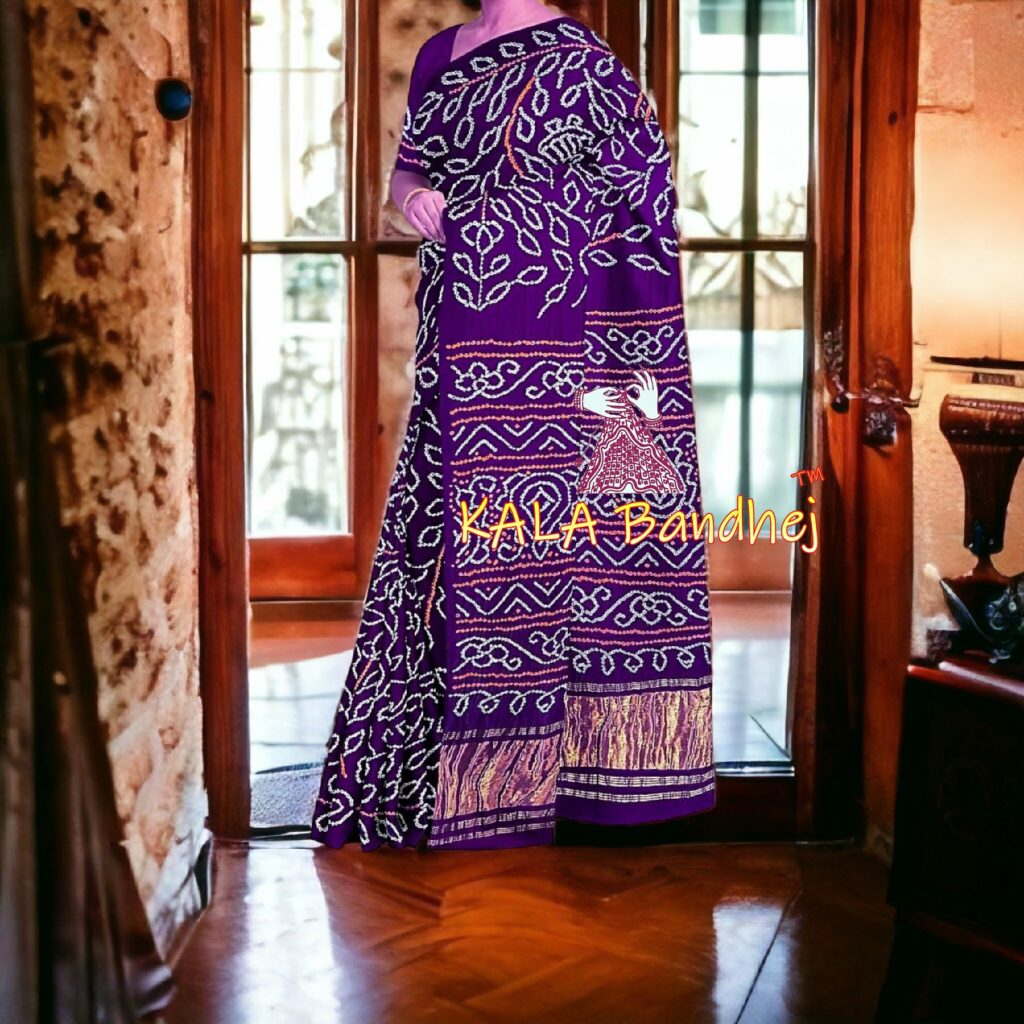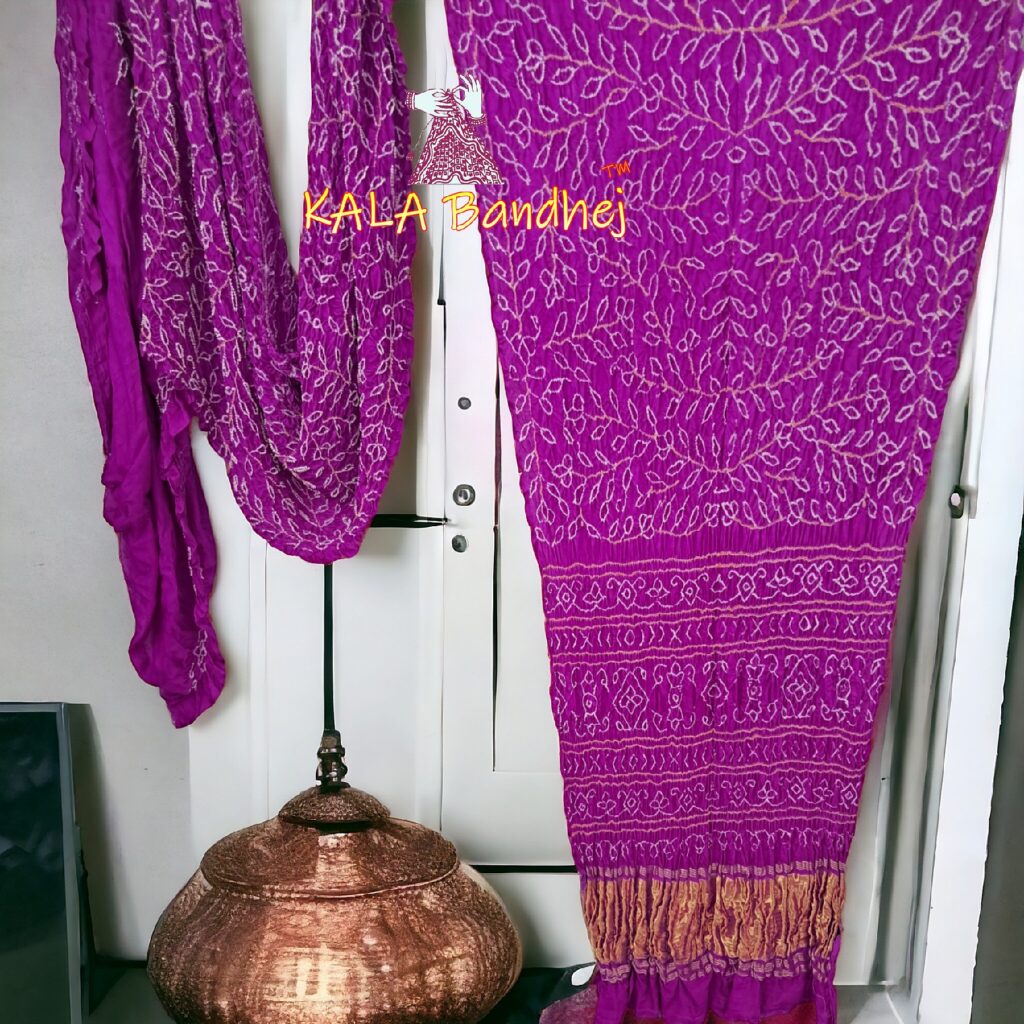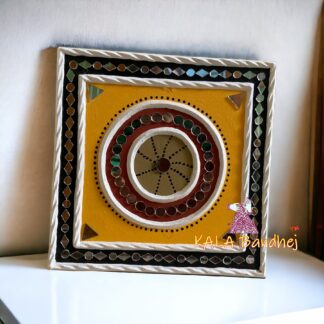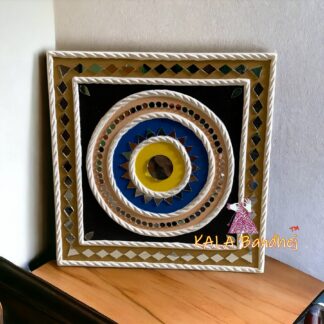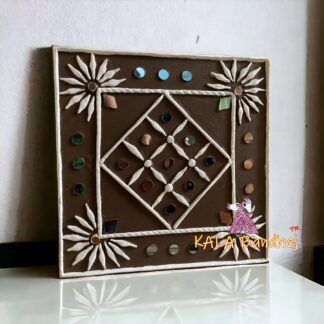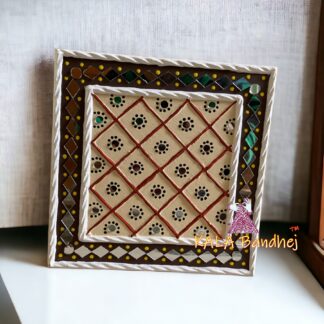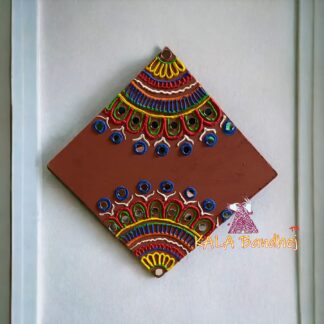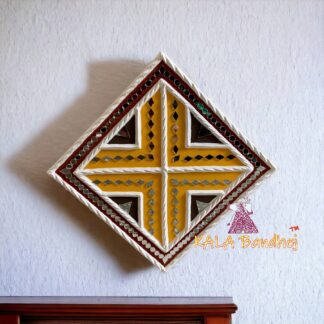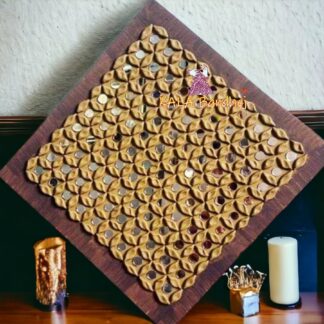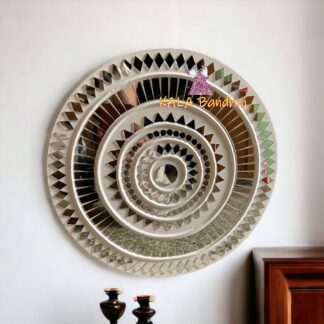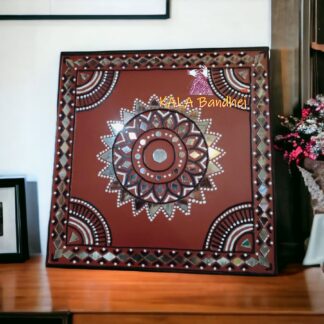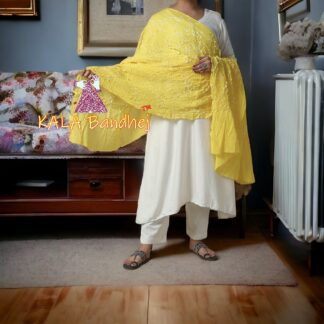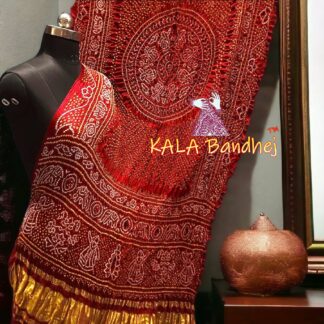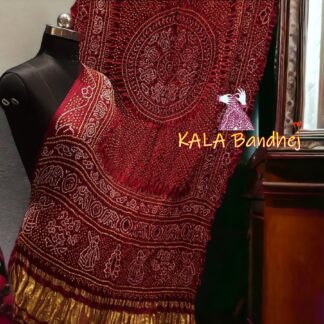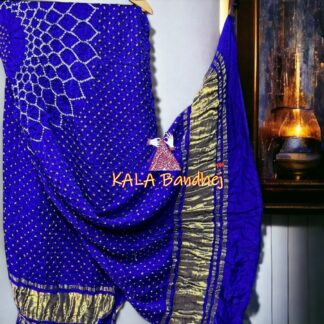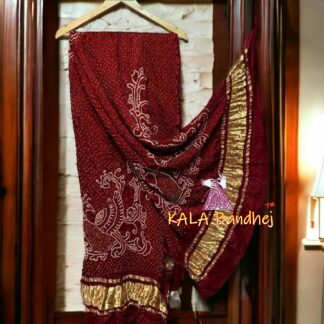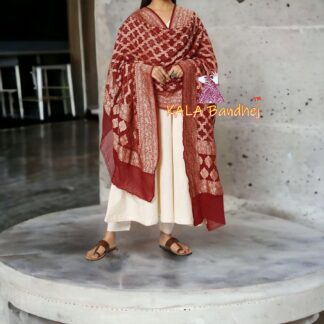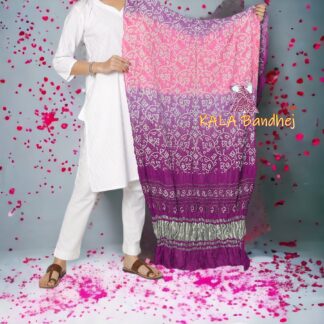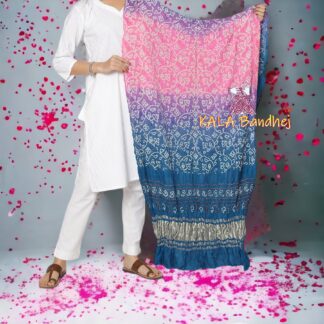Modal is a type of rayon, a semi-synthetic cellulose fiber made by spinning reconstituted cellulose. Modal is used alone or with other fibers (often cotton or spandex) in clothing and household items like pajamas, sarees, dupattas , dresess , fabrics towels, and bedsheets.
Modal is processed under different conditions to produce a fiber that is stronger and more stable when it is wet than standard rayon, yet has a soft feel, similar to cotton. It can be tumble dried without damage due to its increased molecular alignment. The fabric has been known to pill less than cotton due to fiber properties and lower surface friction.
Now A Days Most Popular Fabric For Ajrak & Bandhanis , Prints .
Here For You
NEW LAUNCHED EXCLUSIVE NATURAL AJRAK SAREES
-

Ajrak Saree Pure Modal Silk Hand Block Natural Gold Boder 01
Sale! Original price was: ₹6,500.00.₹4,200.00Current price is: ₹4,200.00. Add to basket -

Red Ajrak HandBlock Saree Gaji Silk Gharchola
Sale! Original price was: ₹25,000.00.₹12,500.00Current price is: ₹12,500.00. Add to basket -

Red Ajrak HandBlock Saree Gaji Silk Gharchola
Sale! Original price was: ₹25,000.00.₹12,500.00Current price is: ₹12,500.00. Add to basket -

Blue Ajrak HandBlock Saree Gaji Silk Gharchola
Sale! Original price was: ₹25,000.00.₹12,500.00Current price is: ₹12,500.00. Add to basket -

Blue Natural Ajrak HandBlock Saree Gaji Silk Design
Sale! Original price was: ₹15,500.00.₹8,800.00Current price is: ₹8,800.00. Add to basket
EXCLUSIVLY NATURAL AJRAK DUPATTAS
-

Black Ajrak Dupatta Hand Block Pure ModalSilk
Sale! Original price was: ₹4,500.00.₹2,800.00Current price is: ₹2,800.00. Add to basket -

Marron Ajrak Dupatta Hand Block Pure ModalSilk
Sale! Original price was: ₹4,500.00.₹2,800.00Current price is: ₹2,800.00. Add to basket -

Ajrak Saree Pure Modal Silk Hand Block Natural Gold Boder 01
Sale! Original price was: ₹6,500.00.₹4,200.00Current price is: ₹4,200.00. Add to basket



